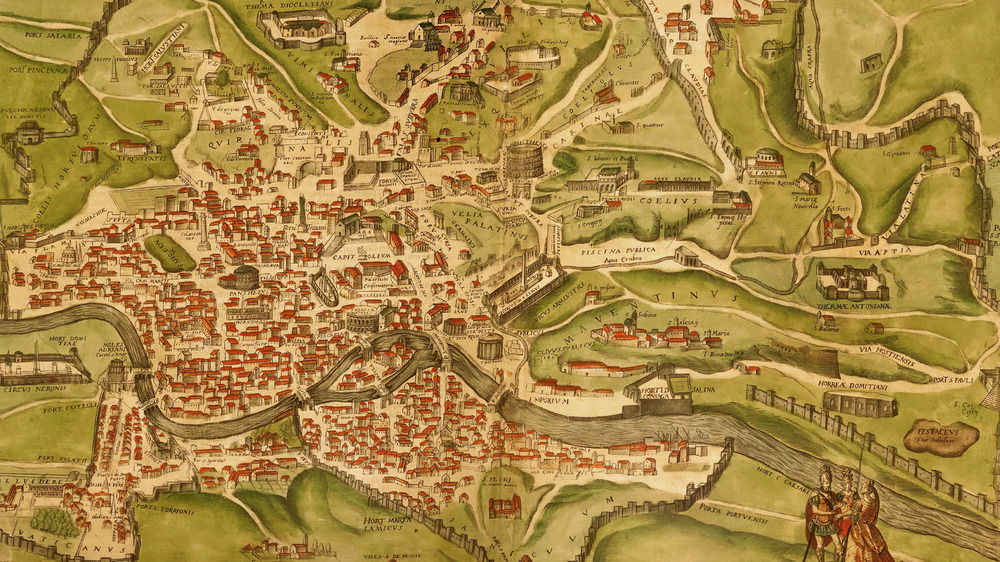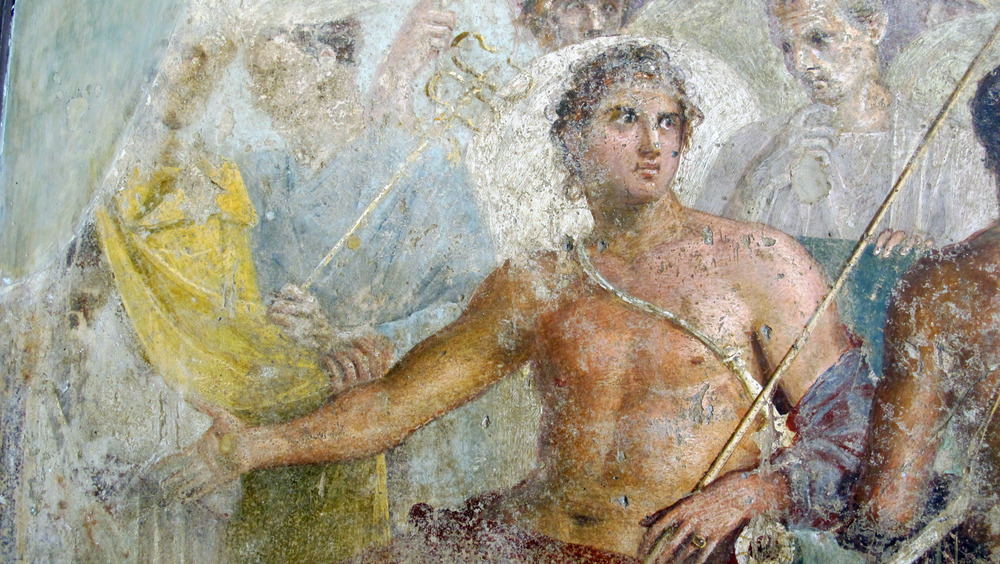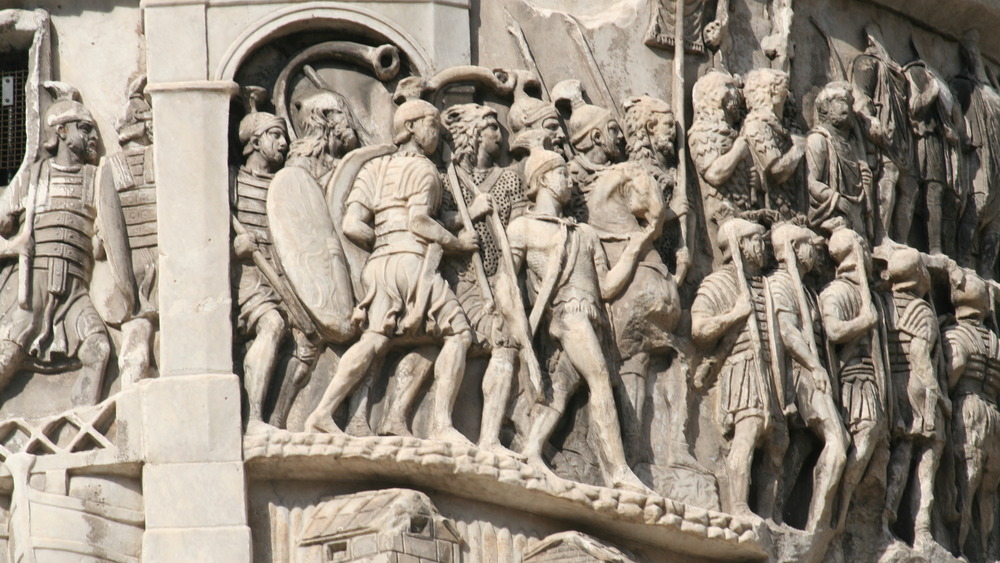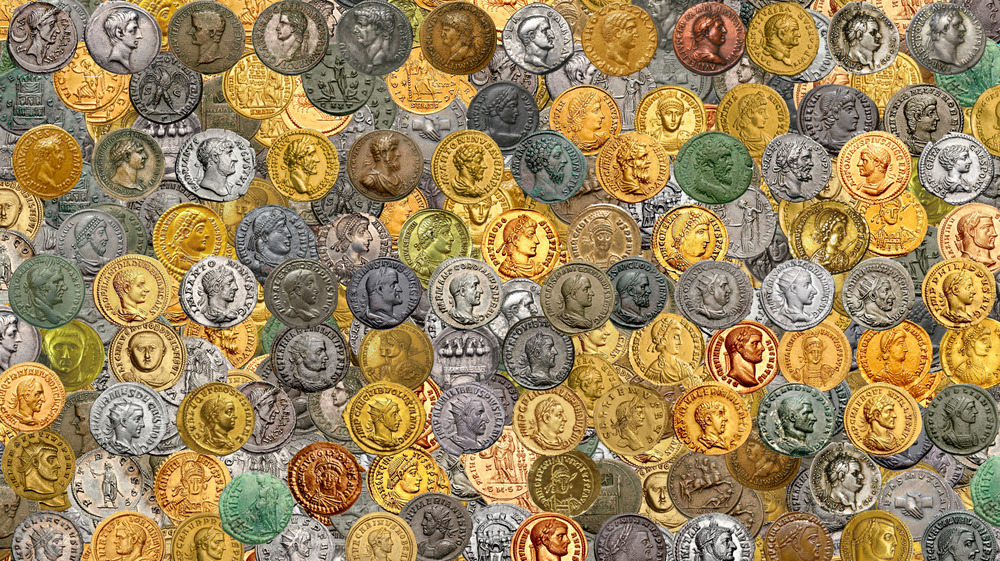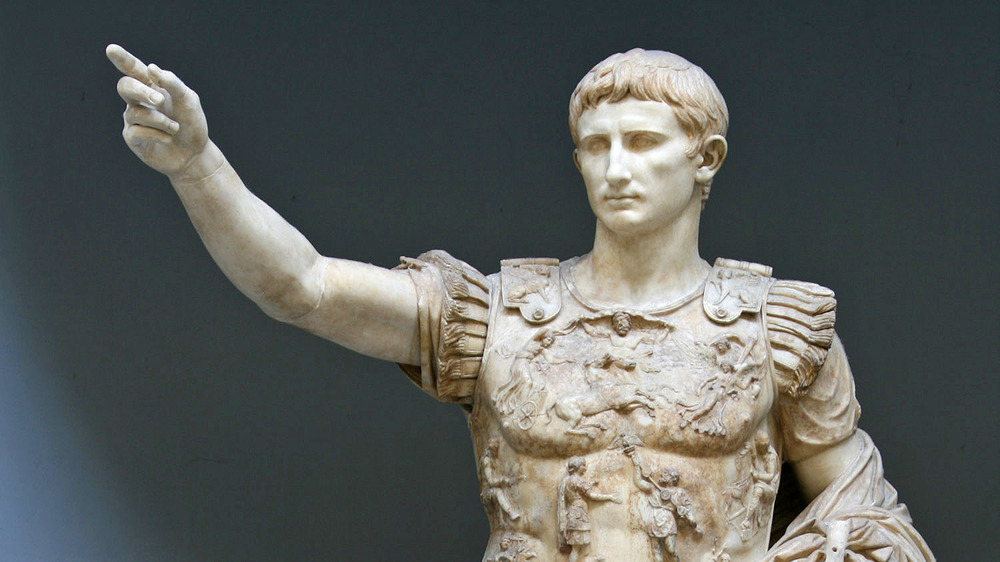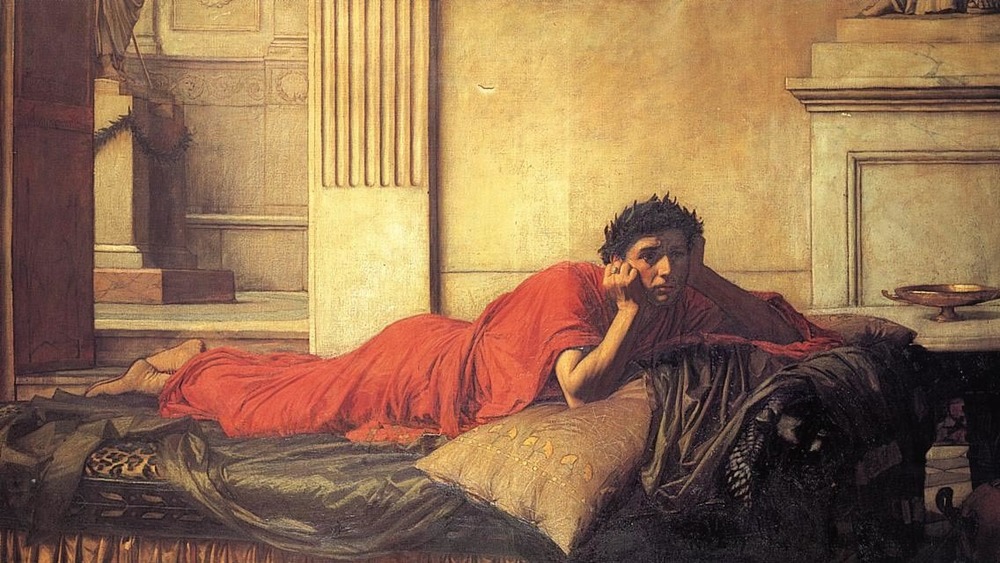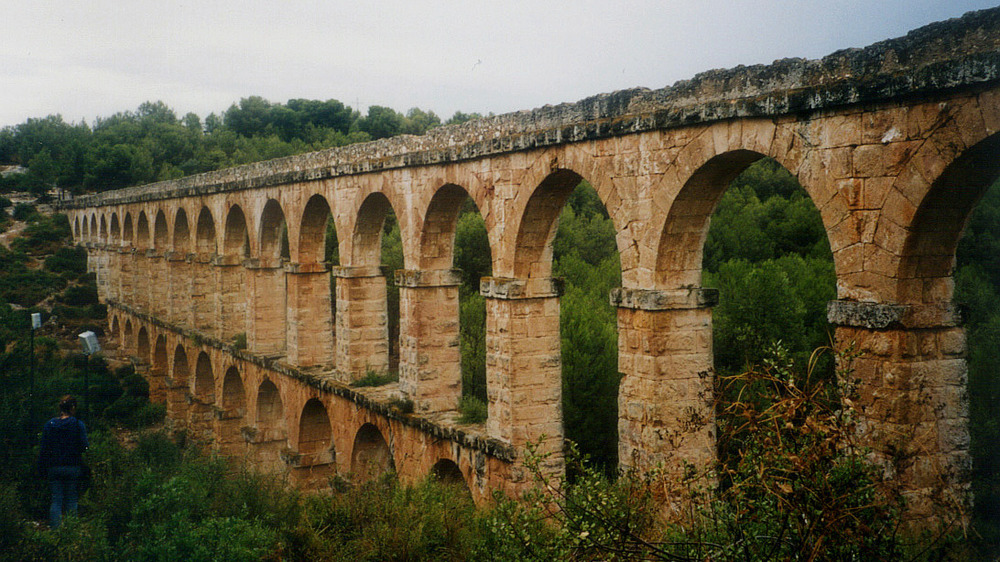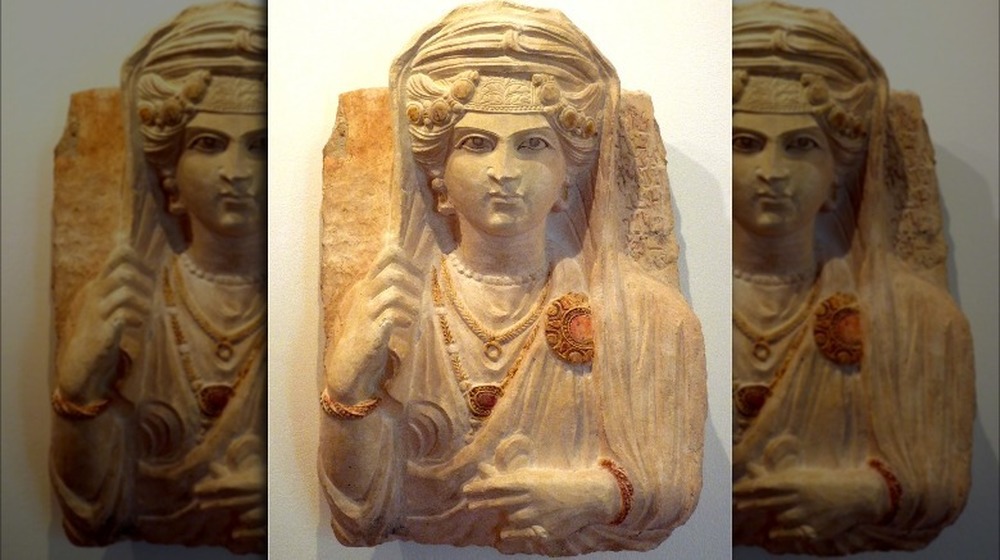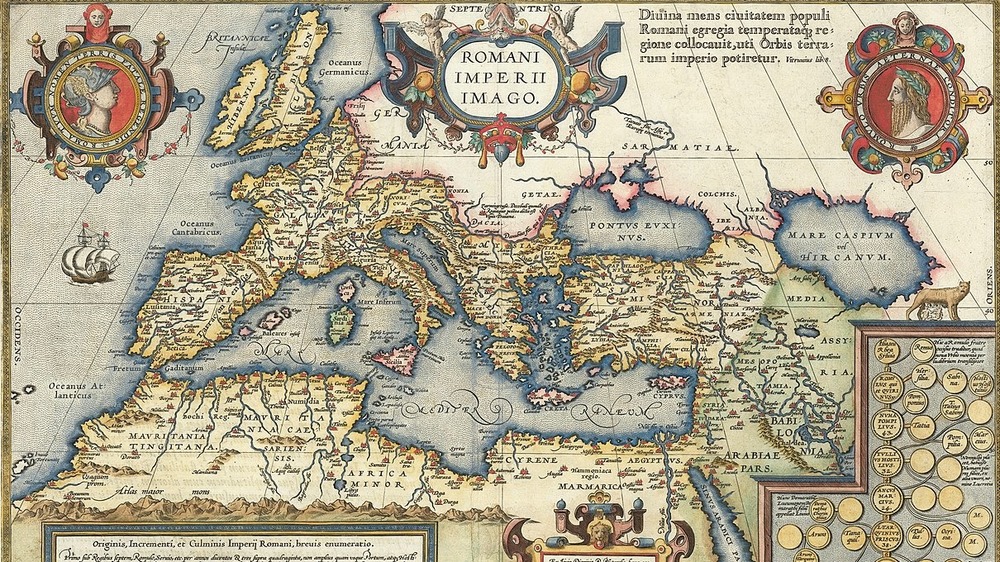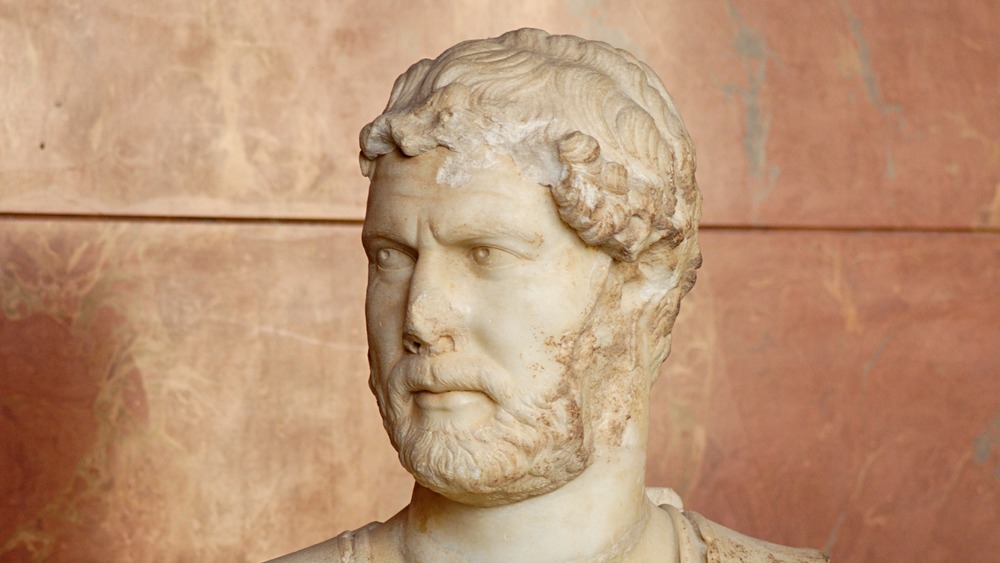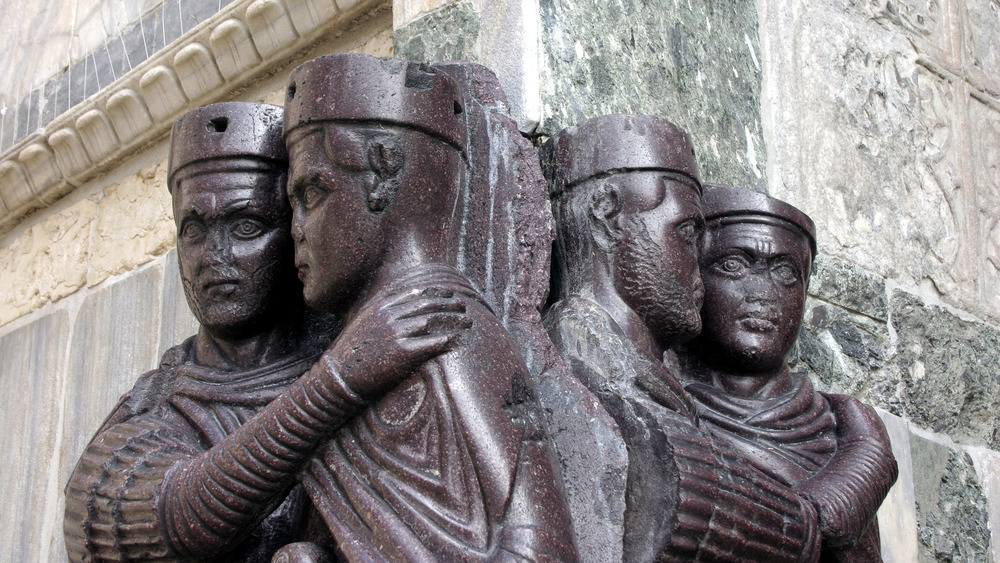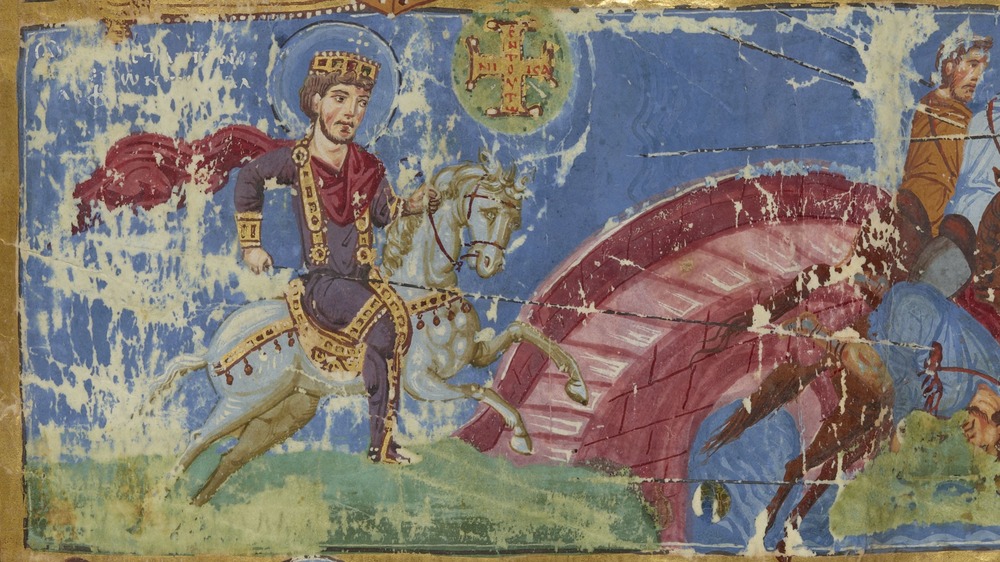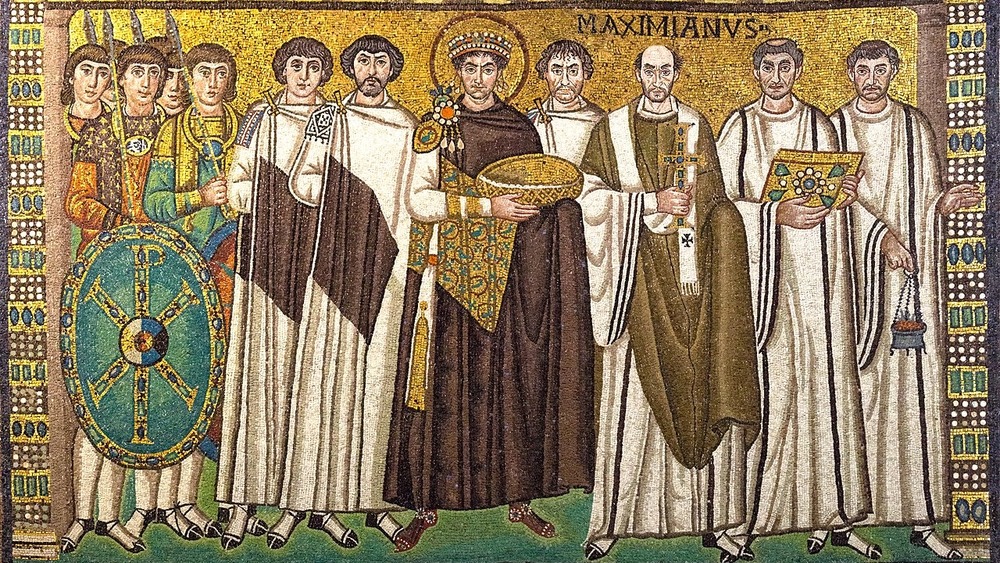This Is The Most Powerful Empire In History
Defining the "most powerful" empire is a task that's bound to come with plenty of argument and about a million different suggestions. Should "powerful" focus on pure landmass? In that case, the title would go to the British, who once proudly proclaimed that the sun never set on their empire which, as Statista reports, once covered around 25 percent of the globe. Then again, it only lasted for a few centuries.
What about people? LiveScience reports that in the 5th century BCE, the Achaemenid Empire oversaw over 40 percent of the world's population. But it lasted only a little over two centuries, according to ThoughtCo. And while Imperial China has a stupendously long history spanning over two millennia, it experienced considerable ups and downs that greatly destabilized the empire, including the Mongol conquest of China in the 13th century (via National Geographic).
We need to find an empire that was around for a long time, enjoyed extended periods of stability, and had plenty of territory. Perhaps the strongest empire was one that could combine all of these, even if they weren't necessarily the highest-ranking in each category. That narrows things down considerably. So, what empire in history could have the expansionist policies and long-term wellbeing that fit the bill, perhaps with some colorful history thrown in as well? For that, we should turn to ancient Rome.
Ancient Rome lasted for nearly 1,500 years
Most historians generally agree that the Roman Empire began in 27 BCE. According to History, that's when Octavian, who had previously defeated Marc Antony and Cleopatra in 31 BCE, became Emperor Augustus. Though one might argue that his predecessor, Julius Caesar, ruled quite like a singularly powerful emperor, it was Augustus who took the official title and heralded the transition of the Republic into an Empire.
The matter of when Rome ended, however, is a bit trickier. Some might argue that the end of the empire proper came during the reign of Diocletian in the late 3rd and early 4th centuries CE, when he split the unwieldy empire into western and eastern halves. Each half was governed by two rulers.
While Western Rome fell in 476 CE, says How Stuff Works, the eastern half did quite a bit better. It eventually morphed into the Byzantine Empire, which then lasted until the Ottomans took over Constantinople in 1453 CE. Going by that metric, the Roman Empire was around in one form or another for well over a millennium. And, while it didn't have the landmass of the British Empire at its height or the relative population of the Persian Achaemenid Empire, Imperial Rome was generally longer-lasting and more stable than practically any other historic empire. When it comes to power, permanence and stability — especially when they last for centuries at a time — count for quite a lot in the empire game.
The Roman military was the best in the world
Over much of its history, one of Imperial Rome's greatest glories was its military. Simply put, there was nothing like it in the world. With its mighty army, Rome was able to expand its borders, bring in new citizens, and establish its historical reputation.
What made Roman forces so great? For one, during the time of the Roman Empire, they were recruited for years-long terms, says the Ancient History Encyclopedia. This contrasted with the earlier military model used during the Republic, when groups of soldiers disbanded after a conflict. Soldiers had to meet certain standards of fitness and could be sent far afield in service of the empire, but they were granted landholdings at the end of the term. Overall, it was a harsh existence, but it at least offered a kind of stability, especially in terms of food and money, that wasn't guaranteed to every Roman, citizen or otherwise.
The Roman Army was also very disciplined, as the BBC reports. Soldiers could be expected to march up to 20 miles per day when they weren't busy fighting or endlessly training. That training paid off, though, as battlefield tactics could make or break a fight. They also had the advantage of weaponry, from swords, to projectiles, to horse-mounted cavalry forces that oftentimes overwhelmed their opponents.
Military expansion pushed a booming Roman economy - for a while
Investment in the military turned out to be a pretty profitable enterprise for Imperial Rome. Per Britannica, the 2nd century saw increased Roman military expansion into foreign territories. This meant plenty of war with different non-Romans along the way, but more often than not, that Roman military machine prevailed. And, when it did, the Empire sent citizens abroad to establish colonies in places as far afield as modern-day Spain and Britain.
The Romans themselves were often cited as saying that they only fought wars when provoked, but the trail of profit that follows behind their military victories is suspicious. Expanding the empire opened up access to economic advantages, though sources from the time period also point to cultural drives as well, like proving the worth of yourself and your people on the battlefield.
But this expansion eventually came with a price. When the Empire extended Roman citizenship to all free people in 212 CE, as History reports, things got difficult. The vast array of territories grew unwieldy and difficult to manage in a world where instantaneous communication was a wild dream.
The early Roman Empire was surprisingly peaceful
As much as Imperial Rome seemed set on making war or, perhaps in their words, bringing Rome to non-Romans, life within the Empire actually wasn't so bad. For over a century, Rome was able to manage a period of peacetime that was so extended we're still talking about it over a millennia later. Called the "Pax Romana," this period of peace lasted from about 27 BCE to 180 CE, according to ThoughtCo. The actual phrase, however, comes courtesy of 18th century historian Edward Gibbon, who debuted the concept in The History of the Decline and Fall of the Roman Empire.
The relative peace within the empire allowed many to achieve new cultural and technological advancements that would have been difficult under more strenuous times. Romans also benefited from tax reform, says the Ancient History Encyclopedia, which may not sound immediately exciting but did free up resources for the city of Rome in particular. Emperor Augustus, who kicked off the new tax system, also rebuilt temples, shored up supplies in case of disaster, and strengthened the ancient city's police force.
Yet, there were occasional hiccups during this period, like the reign of Nero, and those foreign people who weren't too happy about Roman expansion into their territories. Still, compared to the kind of upset that roiled Rome at other times, this was a uniquely steady period in the history of the empire.
Roman emperors occupied a rich but tenuous position
At first glance, you might think that being the Emperor of Rome was a pretty plum job. Sure, you might need to attend a meeting or two, maybe preside over a battle every once in a while, but the rest of the time you're lounging about being fed grapes and listening to someone playing the lyre, right? The truth is, while Roman emperors enjoyed plenty of power, theirs was also a position full of paranoia and deadly political intrigue, according to PBS. After all, that talented lyre player might also be an assassin sent by your political enemies. And are those grapes poisoned?
Emperors were supposed to rule for life, meaning that anyone who was deemed unfit for the role — whether they were mentally ill, overly powerful, or just simply unpopular — might meet an untimely end. Even if they didn't die via poison or stabbing, emperors still had to sacrifice much in the name of power, whether it was divorcing a beloved spouse or killing one's own troublesome family members, just to stay on top.
According to the Ancient History Encyclopedia, all of those imperial dynasties could get dangerously tangled. Only four of the first 12 Roman Emperors appear to have died of natural causes. Six would meet their ends through murder or assassination, while two even brought their own lives to an end, proving that the Imperial throne was hardly any protection after all.
The Roman Empire benefited from technological advances
Much like the military, the intensity with which Rome invested in technology has been credited as one of its keys to success. Though some technologies debuted when Rome was still a republic, these advances were refined and still very much in use by the time the Empire came around.
So what, exactly, were the sorts of technological advances that made Imperial Rome such a big deal? According to History, these included the refinement of the (for them) ancient concept of aqueducts, which first came about in the 3rd century BCE and allowed cities to pop up far from water sources. And those marching men in the famous Roman military would have had an even tougher time of things if they didn't sometimes get to use paved Roman roads, which also proved useful for traders, immigrants, and all other sorts of travelers. By the time of the empire, regular folks could also read newspapers and would even eventually have potential access to bound books.
The military was also supported by considerable advances in battlefield medicine, according to the St. Louis Science Center. While Roman medical care still doesn't compare to modern technologies and anesthetics, it was still a far sight better than in other times and places. Ancient surgeons advanced the use of tourniquets to stanch bleeding, started doing basic preventative care like physicals, and even made some of the first steps to sanitize the notoriously dirty world of the battlefield.
Hierarchy was a vital part of the Roman Empire
Imperial Rome, like so many other societies, operated on a highly structured and hierarchical system. As PBS says, the emperors were clearly at the top of the pecking order. They were followed by high-class Patricians, then the Equites, second-class Plebeians, freedmen, and, finally, slaves. Those stratifications were clearly delineated by social circles, finances, clothing (the emperor was the only one who was supposed to wear a purple toga), and laws.
Traditionally, it was incredibly tough to move between social classes, meaning that social climbers throughout much of Rome's history would have been very frustrated indeed. Yet, the rise of the empire meant that some of those structures began to soften. A patronage system opened up routes to power for some, while others simply leveraged loads of money. Eventually, Emperor Augustus opened up the Equites class to more people and allowed them to take seats in the vaunted Roman Senate.
But as the Ancient History Encyclopedia points out, that system only really applied to a select group of men. Women were typically expected to remain in the home under the authority of a father or husband, though, as in many societies, lower-class women were obliged to work while upper-class ones sometimes got involved in politics and religion, like the Vestal Virgins. Slaves, meanwhile, were solidly at the bottom of society. Quite a few were captured foreigners, unwillingly contributing to the economic growth of the empire far from their own homes.
The Roman Empire knew how to play the territory game
At its height in roughly 117 CE, Vox reports, the Empire had control of Britain to the north and Egypt to the south. The Romans would eventually expand west to the Atlantic Coasts of Europe and what's now Morocco and as far east as Babylon (in modern day Iraq) and Armenia. Though, it's important to note that this wasn't the largest-ever mass of land controlled by a single empire. That distinction would go to the British Empire, which Statista reports controlled nearly a quarter of the world's land by 1920. Yet, especially in terms of the ancient world, the sheer amount of land and number of people under Roman control was still utterly staggering.
Foreign policy became critically important as the frontier became a political as well as a military realm. According to Khan Academy, the early Empire focused on military expansion, while later forces were more intent on holding the line and maintaining borders. Slowly but surely, Roman influence was felt more in the political sphere of these borderlands than in its fighting force.
The Five Good Emperors brought Rome to its height
Roman emperors have a pretty bad rap. For some of them, that reputation is probably somewhat deserved, though the true stories of notoriously naughty rulers like Nero and Caligula are perhaps more complicated than you might realize. Yet, for others, it's not really fair to lump them in with an emperor whom legend says made his horse a Roman politician. Some of them might even rightfully be called "good."
At least, that's their reputation. The "Five Good Emperors," as described by the Ancient History Encyclopedia, were, well, five Roman emperors who managed to leave the realm looking a little better than how they found it. Those five also, maybe not coincidentally, reigned in succession. It began with Nerva in 96 CE, who was followed by Trajan, Hadrian, Antoninus Pius, and finally Marcus Aurelius, whose rule ended in 180 CE.
What made them so good? According to Britannica, the Five Good Emperors presided over a truly grand expansion of the Roman Empire. The system of government ran relatively smoothly and practically everyone whose territory was conquered by Roman forces went along and became pretty Romanized themselves. It wasn't all perfect, though, as this is the era in which the emperor started to become something of a dictator and previously independent institutions like the Senate became filled with his cronies.
Diocletian divided up Imperial Rome when it got too big
Sometimes, success comes back to haunt you. In the case of Imperial Rome, all of the military might, cultural expansion, and new territories started to become downright unwieldy. That's why, around 285 CE, Emperor Diocletian split the empire into Eastern and Western halves, according to ThoughtCo. The new system was referred to as a "tetrarchy" that encompassed four different rulers, also known as a "rule of four." Basically, each half would have a primary ruler with a subordinate ruler acting as a sort of vice president (but with more power), called a "caesar." Diocletian would continue to rule in the east, while his counterpart in the west was Maximian.
But why would Diocletian give up so much of his power in this dramatic change? The empire had simply grown so vast that it was incredibly difficult to govern it effectively from Rome. As Vox reports, travel and therefore communication in the Roman world could be excruciatingly slow. It was also an empire wracked with crises. By the third century, it was painfully clear that an emperor could be assassinated, leaving behind a potentially deadly power vacuum. It's very likely that Diocletian wanted to make it almost impossible to topple the Empire by killing a single ruler, as there would have been three more to take his place.
One Roman emperor became a powerful Christian, but not everyone agrees on his motives
As the Roman Empire moved on, its relationship to religion became increasingly tangled. Originally, pretty much everyone in Rome could be considered a "pagan," though Pagans: The End of Traditional Religion and the Rise of Christianity argues that they wouldn't have called themselves as such. They just would have worshipped the gods like everyone else, even if those deities had different names elsewhere and the Romans were often riffing on Greek traditions.
Then, Christianity happened. While it's true that early Christians did experience persecution in the Roman Empire, the BBC reports that things softened as time went on. Eastern Roman Emperor Constantine the Great even converted to Christianity sometime in the 4th century and officially accepted it in the Edict of Milan. A decade later, it was the state religion.
However, some wonder if Constantine had non-spiritual reasons for his conversion. Some accounts say that he didn't formally convert until he was on his deathbed. Other legends maintain that he converted after a vision pushed him to fight a battle under the Christian symbol of the cross, as ThoughtCo reports. Or maybe Constantine had a guilty conscience for committing the sorts of crimes emperors tended to commit and wanted absolution. Perhaps he rightfully predicted that Christianity would become a major cultural and political force and jumped on the train early. Whatever the motivation, Constantine's reforms almost certainly helped pave the way for the emerging religion.
Not everyone agrees on when Rome actually fell
Though it sounds like a dramatic, singular event, the truth is that the "fall of Rome" is actually pretty tough to pin down. How exactly can you pick out the "end" of a civilization that existed for so long, in part because it was often ideologically flexible? Did Imperial Rome end when Diocletian basically threw up his hands and cut the empire in two? Did it become something totally different and not-Rome when Constantine gave Christians the thumbs up?
According to ThoughtCo, 18th century historian Edward Gibbon picked 476 CE, when Western Rome fell to barbarian invaders led by Odoacer, who deposed the last western emperor, Romulus Augustulus. That was admittedly pretty dramatic, assuming Odoacer knew how to make an entrance. But, then again, Eastern Rome was still around, eventually transforming into the Byzantine Empire.
If you accept that "Rome" was still holding on in Byzantium, then the empire was still around by the time Constantinople was taken by the forces of the Ottoman Empire in 1453 CE. So, when Rome fell all depends on who you ask. Ultimately, there isn't a single, dramatic event that we can point to, meaning that historians have plenty to argue about many centuries after the fact. Even then, many would likely agree that Rome, whatever it was, still remains the strongest empire in human history.
